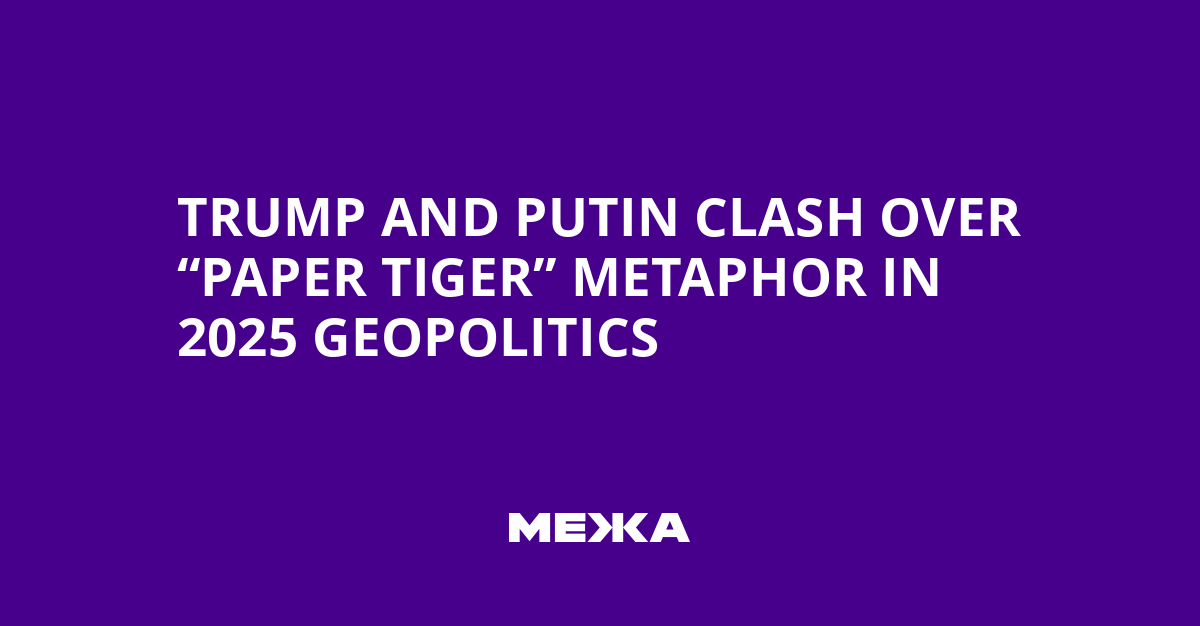In September 2025, the world once again watches how the rhetoric of power shapes perceptions of global politics: former U.S. President Donald Trump called Russia a “paper tiger” in a Truth Social post, and later repeated this remark before a large audience of generals and admirals. According to him, the Russian Federation has been at war for three years, and it could have ended sooner if the United States had used the full spectrum of capabilities on the world stage. The Kremlin responded that NATO also raises concerns, but stressed its confidence in its forces and potential.
Trump directly addressed the military with the question: “Are you a paper tiger?” – highlighting the difference between Russia’s claimed capabilities and the real battlefield results.
“You have been waging a war for four years that you should have finished in a week.” “Are you a paper tiger?”
– Donald Trump
In response, Russian President Vladimir Putin stated that Moscow is fighting against the entire NATO bloc, continues to move forward, and called himself and his team a “paper tiger,” but also noted that NATO is part of a coherent systemic threat to world security.
“We are fighting the entire NATO bloc, continue to move forward, feel confident, and we are a paper tiger; what about NATO itself?”
– Vladimir Putin
Origins of the phrase and its role in Chinese propaganda
Experts emphasize that the image of the “paper tiger” has deep roots in the linguistic heritage and propaganda of the Communist Party of China. The term zhilaohu became one of the key tools for criticizing the West and the United States during tense moments of the Cold War, using the image of strength to convey a sense of rational order while masking weakness in reality.
“As a Chinese historian, I had to smile at the irony when President Trump borrowed one of Mao Zedong’s favorite expressions, calling Russia a ‘paper tiger’.
– John Deleri
According to historical records, Mao Zedong’s expression appeared in the context of a conversation with an American journalist in 1946, when the United States, as a key player in global security, aroused concern. Mao himself first used the concept “zhilaohu” as the image of a strong, but actually vulnerable opponent. Over time this phrase evolved into a tool for criticizing Western powers and became part of the international discourse on the balance of power.
“In all of this history, there is a resonant echo of the Cold War.”
– Rana Mitter
In the contemporary context, this metaphor is used to analyze how ancient images and concepts adapt to new geopolitical realities among the United States, China, and Russia. Historical experience shows that such comparisons can shape public discourse, influence political decisions, and confidence in a country’s power on the world stage.
Influence on contemporary discourse and the meaning of metaphors in politics
Contemporary observations indicate that similar images continue to influence public debates in the United States and beyond. They help explain how propaganda and historical parallels shape perceptions of power, threats, and opportunities for nations, and how these narratives affect leaders’ decisions and international relations in the context of a changing global security architecture.
Thus, the history of the phrase “paper tiger” and its various interpretations shows how symbols can remain relevant, transforming from tools of propaganda into instruments for understanding contemporary geopolitical realities. They help explain why superficially weak images can have a strong impact on politics, public opinion, and international relations in the 21st century.
